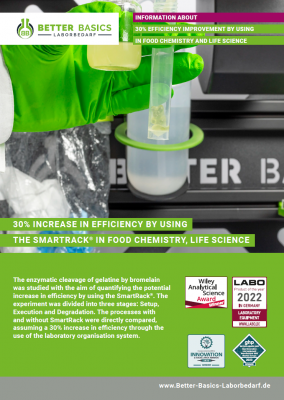30% EFFICIENCY INCREASE IN FOOD CHEMISTRY, LIFE SCIENCE BY USING THE SMARTRACK®.
The enzymatic cleavage of gelantine by bromelain was investigated. THe aim was to quantify the potential increase in efficiency by using the SmartRack®. The expermient was divided into three stages: Setup, Execution and Degradation.
30% increase in efficiency by using the SmartRack® in food chemistry, life science
Abstract
The enzymatic cleavage of gelatine by bromelain was studied with the aim of quantifying the potential increase in efficiency by using the SmartRack®. The experiment was divided into three stages: Setup, Execution and Degradation. The processes with and without SmartRack were directly compared, assuming a 30% increase in efficiency through the use of the laboratory organisation system.
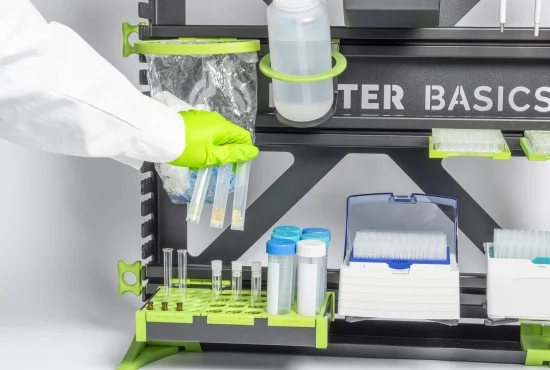

Methodical simulation of enzymatic reactions in food chemistry
This study investigated the effectiveness of the SmartRack® system compared to no laboratory organisation system on the efficiency of set-up, execution and breakdown. Data were collected on the enzymatic cleavage of gelatin in gummy fruits using bromelain, an enzyme derived from pineapple. This was done as an example for the life science and food chemistry industries. The aim was to verify the altered results using a laboratory organisation system.
Enzymatic reactions are essential for the maintenance of vital functions in living organisms. As specific biocatalysts, they speed up chemical reactions, enable efficient metabolic processes and are essential for biochemical processes. Without the catalysis of reactions, many vital processes in the organism would not be fast enough to meet energy and metabolic needs.
At the same time, enzyme-dependent processes are very sensitive to exogenous influences. They require a constant, standardised laboratory environment with standardised temperature, pH, humidity and other working conditions. Whether the SmartRack® can support these high requirements was investigated in the following experiment.
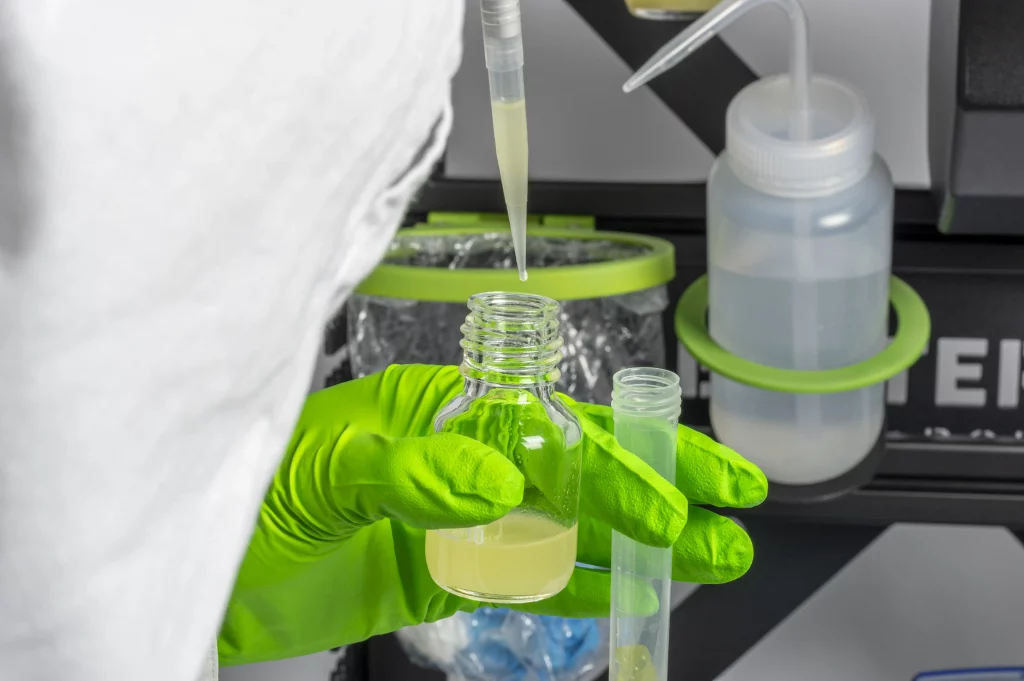
Methodology
Two experimental setups were compared: one with the SmartRack® and one without. The changes in workplace organisation, the ability to perform contamination-free experiments and the accuracy of data collection were evaluated. The facilitation of standardisation and the impact on reproducibility were also examined. The SmartRack® laboratory organisation system aims to provide a more effective, ergonomic and consistent way of working.
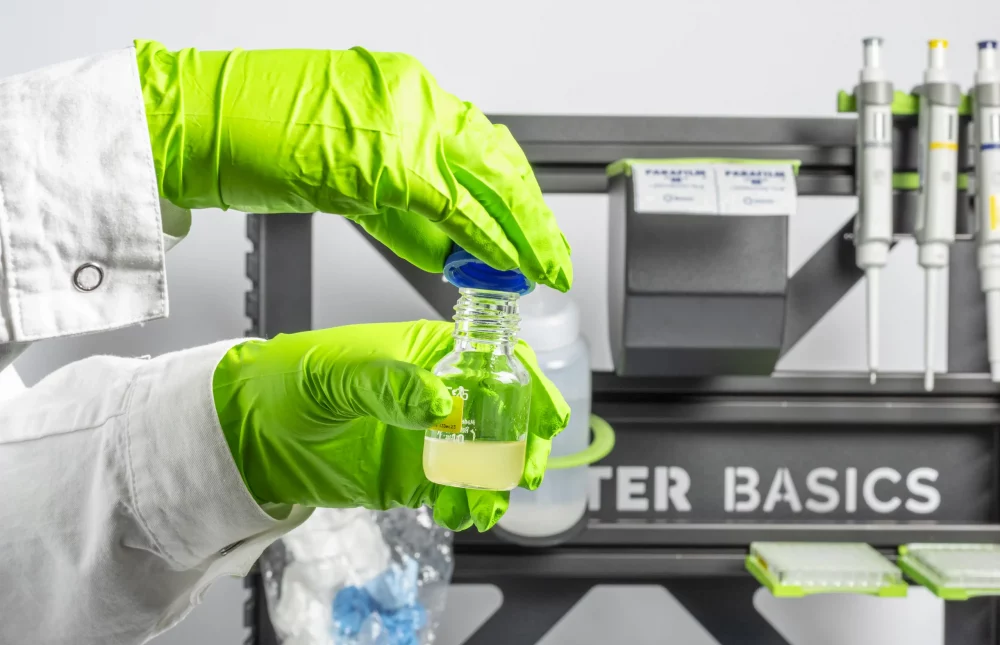

Comparison of experimental set-ups with and without SmartRack®
In the experiment with SmartRack®, the necessary chemicals and materials were available directly at the workstation in the correct order. Pipette tips, gloves, tweezers and pipettes were neatly organised in the SmartRack®.
The use of imprecise pipettes, contaminated or incorrect materials can affect the smooth running of enzymatic reactions. For example, the use of talcum-coated gloves and their entry into the sample can affect enzymatic activity. Double distilled water is required for dilution series. The choice of module holders means that the chemicals and materials required for the experiment are available at the workstation in a standardised, ergonomic arrangement without having to search for them. The integrated storage box provides safe, contamination-free storage of samples while liquids are being added or the reaction is being observed. The tablet holder in the SmartRack® allows results to be digitised immediately, minimising transmission errors.
In the traditional, unorganised setup, obtaining chemicals, equipment and materials requires additional walking and searching. Unsorted pipettes, gloves and other materials create disorder, inefficiency and increase the risk of contamination. Traditional test tube or tube racks present a risk of instability and potential tipping. They cannot be stacked and take up a lot of workspace. There is little room for parallel experiments with additional materials and samples during reaction and waiting times.
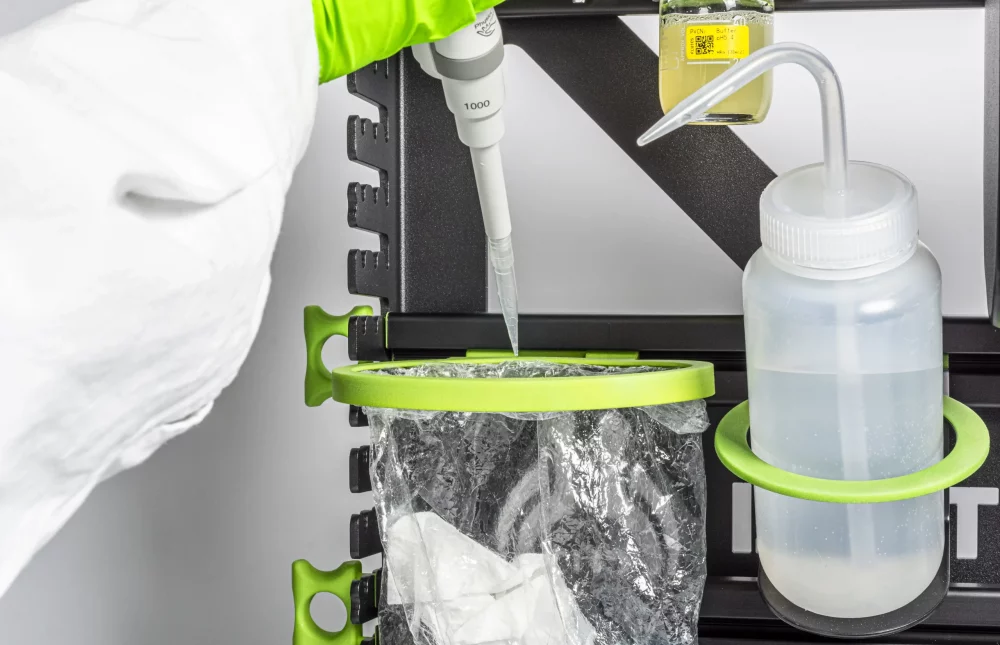

Conclusion
The use of the SmartRack® system in enzymatic experiments showed significant advantages in terms of organisation, experimental stability and efficiency. The SmartRack® system reduces sources of error and contamination, especially in food chemistry and life sciences, by providing a standardised arrangement and the possibility of digitising the results. This study highlights the importance of a laboratory organisation system and suggests that a 30% increase in efficiency is possible through the use of SmartRack®.
Download our folder on the topic here
Information on 30% increase in efficiency by using SmartRack® in food chemistry, life science
Further information
You can download our product catalog as a PDF file from the downloads section of our website.
If you are interested in our products, please use the inquiry form in the downloads section.

